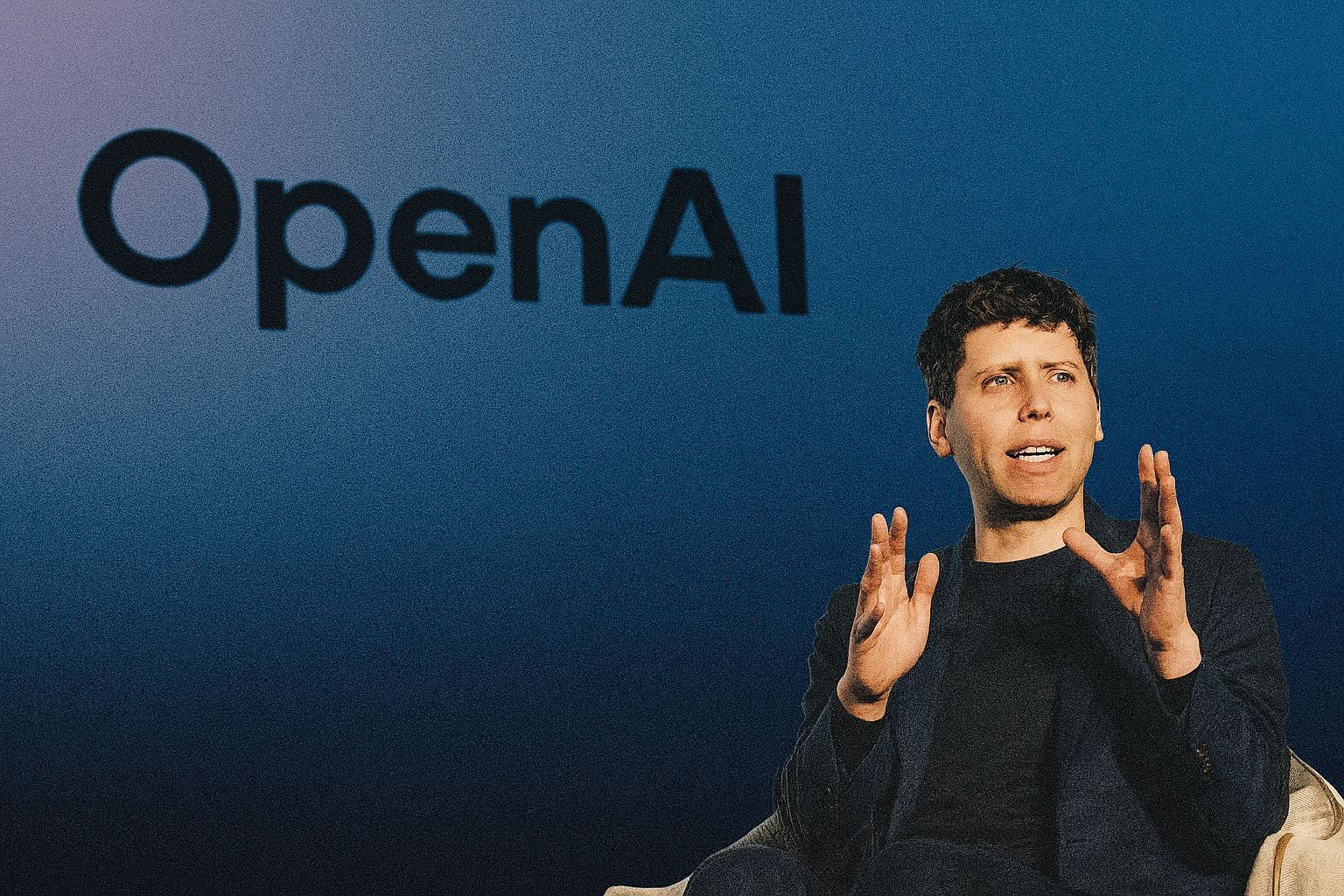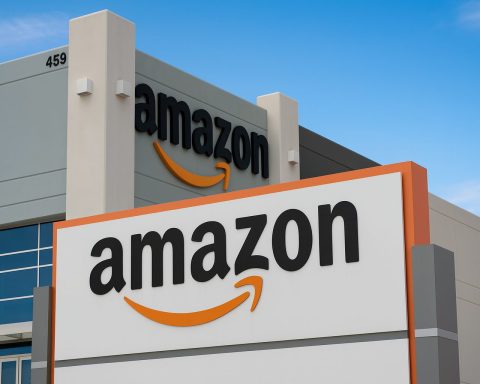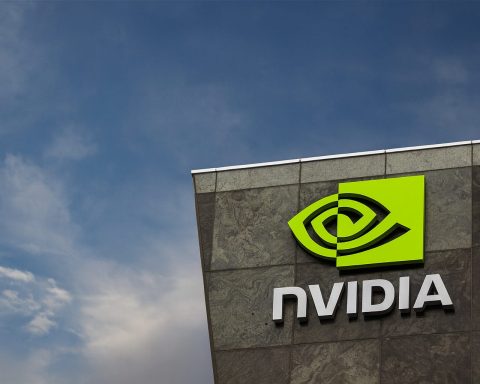- OpenAI Restructures: On Oct 28, 2025 OpenAI converted itself into a $500 billion-valued public benefit corporation (PBC), freeing itself to raise massive capital and pursue an IPO [1] [2]. The new nonprofit OpenAI Foundation retains a ~26–27% controlling stake, while Microsoft’s investment stake is now about 27% [3] [4]. CEO Sam Altman said this lets OpenAI “take this technology and this user base…and get the whole world to build amazing new companies and services on top of it” [5].
- GPT-5 & New Features: In August 2025 OpenAI launched GPT-5, a major upgrade touted as “our best AI system yet” [6]. By early fall all ChatGPT users (free and paid) had been migrated to GPT-5 as the default model. New ChatGPT features include a “Tasks” automation mode (letting ChatGPT handle reminders, scheduling, etc.) and ChatGPT Atlas (a standalone AI-powered web browser debuted Oct 21) [7] [8]. OpenAI also released Aardvark (Oct 30) – a GPT-5–powered security agent that autonomously finds and patches software vulnerabilities [9] [10]. Meanwhile, the ChatGPT mobile app added teen/parental controls (late Sept) after safety concerns [11].
- Mega Partnerships & Investment: OpenAI secured enormous compute deals. In early Oct it announced a 6‑gigawatt GPU pact with AMD (with stock warrants tied to milestones) [12]. Nvidia meanwhile pledged $100 billion to OpenAI for next-gen chips and co-develop custom silicon [13]. OpenAI and investors have plans for a “Stargate” project to build 30 gigawatts of AI supercomputers (the power of ~6 nuclear plants) in coming years [14]. It’s also collaborating globally: SoftBank is paying $3 billion/year to license OpenAI’s tech in Asia and investing an additional $15 billion in U.S. AI infrastructure (with Oracle) [15].
- Competitors Heat Up: Rival AI companies raced too. Anthropic raised $13 billion in Sept 2025 (valuing it at ~$183 billion) and has expanded Claude (its AI) with new versions like Claude 4.5 and code assistants [16]. Anthropic opened new offices in Tokyo, Seoul and India in late 2025 [17]. Google DeepMind rolled out Gemini Robotics 1.5, a vision-language-action model that lets robots plan and execute complex tasks via web searches [18]. Google also embedded its Gemini AI in Chrome and Search – e.g. “Gemini in Chrome” can summarize info across tabs or even act as a personal browsing assistant [19] [20]. Meta (Facebook) likewise pushed AI: at Meta Connect 2025 it highlighted AI-driven VR and wearables (AI glasses), new Llama model tools, and a “Meta Horizon Engine” for immersive experiences [21].
- Regulation & Safety: AI is now a global policy focus. The EU is finalizing its landmark AI Act and a voluntary code of practice (with commitments from OpenAI, Google, Meta, etc.) on copyright and safety. In China, President Xi Jinping called (Nov 1) for a new international AI governance body (“World Artificial Intelligence Cooperation Organization”) to set global rules and make AI a “public good” [22]. The US remains polarized – in 2023 Big Tech promised the White House to watermark AI content and test systems for safety [23], but the new US administration revoked a 2023 Biden AI safety order in Jan 2025 [24]. Within OpenAI, a board-appointed Safety & Security Committee (chaired by CMU’s Zico Kolter) oversees model safety [25]. Amid these debates, OpenAI added new teen account protections (parental controls, data opt-out, self-harm alerts) to address user safety [26] [27].
OpenAI’s Mega Restructuring and New Launches
In late October OpenAI stunned the tech world with a landmark corporate overhaul. The company reorganized into a Public Benefit Corporation controlled by the original nonprofit (renamed the OpenAI Foundation), freeing OpenAI to raise virtually unlimited capital [28] [29]. This $500 billion valuation deal trims Microsoft’s share to ~27% (from ~32%) but keeps it as a major backer [30] [31]. Sam Altman has made no secret that OpenAI will likely go public – he told investors an IPO is “the most likely path for us, given the capital needs” for massive AI data centers [32] [33]. He also said the new structure lets OpenAI become a platform: “we can now take this technology and this user base… and get the whole world to build amazing new companies and services on top of it,” Altman said in an Oct 28 livestream [34].
Behind the scenes, OpenAI is betting on a compute “arms race”. CEO Altman described plans to build an extra 30 gigawatts of AI servers (enough to generate 1 GW per week), a $1.4 trillion infrastructure push [35] [36]. To fuel that, OpenAI is striking blockbuster deals with chipmakers: in early Oct it announced a 6‑GW GPU deal with AMD (Instinct MI450 and beyond) that even included an equity warrant in AMD [37]. Analysts called the AMD agreement “transformative” for showing AMD could rival Nvidia [38]. Nvidia itself promised $100 billion in AI chips and R&D to OpenAI [39]. Meanwhile OpenAI plans to co-develop custom chips (with Broadcom) and spend ~$300 billion on Oracle cloud services over five years [40]. Altman joked in public that this “Stargate” push to massive computing is now the main bottleneck – and even stood with former President Trump (Jan 2025) to tout the economic benefits of these plans [41].
On the product front, OpenAI has not been idle. Its flagship ChatGPT service moved up to GPT-5 this summer – an upgrade OpenAI calls “a significant leap in intelligence” [42]. GPT-5 adds a huge context window (hundreds of thousands of tokens) and integrated “thinking” modules so it reasons more deeply when needed [43]. All ChatGPT users were seamlessly switched to GPT-5 by fall 2025. New ChatGPT features followed: a “Tasks” mode now lets the bot automate routine jobs like scheduling or email drafting, edging it closer to a virtual executive aide [44].
Perhaps the most eye-catching release was ChatGPT Atlas (Oct 21, 2025): essentially an AI-powered web browser. Atlas embeds ChatGPT into every tab, summarizing pages, drafting emails on the fly, and even autofilling forms [45]. Early reviewers hailed Atlas as a “once-in-a-decade” reinvention of web browsing and worried it could challenge Google’s search business – Alphabet’s stock briefly dipped on Atlas’s debut [46].
OpenAI also expanded into new AI domains. Mid-October saw the unveiling of Sora 2, an advanced text-to-video model that can generate hyper-realistic 60-second video clips from a prompt [47]. Its mobile app racked up over 1 million downloads in days (by invite only), demonstrating enormous demand – even as Hollywood studios raised alarms about misuse of actors’ likenesses [48]. And on Oct 30 OpenAI announced Aardvark, a GPT-5–powered agent for cybersecurity [49]. Aardvark autonomously hunts for software vulnerabilities and can even suggest fixes, putting AI to work on hard engineering tasks. These new offerings show OpenAI’s shift from a pure chatbot maker to a broader AI platform company.
AI Industry Update: Rivals, Partnerships and Funding Frenzy
While OpenAI is grabbing headlines, its rivals are equally aggressive. Anthropic – OpenAI’s closest competitor – has been sprinting to grow. In early Sept 2025 Anthropic closed a $13 billion funding round (led by existing investors) that valued it at ~$183 billion [50]. With those funds, Anthropic has expanded operations worldwide: in October it opened new offices in Tokyo (announced Oct 29) and earlier opened spaces in Seoul and India [51]. Anthropic also keeps upgrading its models: it released “Claude Sonnet 4.5” in Sept 2025 and launched Claude versions specialized for coding and enterprise use (e.g. “Claude Code” on web/mobile) [52]. Deloitte, LSEG and others have partnered to integrate licensed data into Claude for financial analysis (Oct 2025 news). In short, Anthropic is scaling up in people, models and domain-specific tools to challenge OpenAI’s lead.
Tech giants beyond OpenAI’s camp are also weaponizing AI. Google’s DeepMind introduced new robotics AI in Sept 2025. The Gemini Robotics 1.5 (and companion ER 1.5) models let robots plan multi-step tasks by reasoning – even searching the web for needed info [53]. For instance, a Gemini-powered robot can now sort laundry by color or pack a suitcase by looking up the weather forecast online [54]. In consumer tech, Google has deepened AI integration: the latest Android/Chrome updates rolled out “Gemini in Chrome”, an AI assistant built into the browser that can summarize across multiple open tabs and soon complete tasks (like booking appointments) on your behalf [55] [56]. Google also enhanced Search with AI modes and released a big “Gemini Drop” update to its mobile app (adding creative tools, no-code app builder, etc [57]).
Meta (Facebook’s parent) is likewise pushing AI frontiers. At its Meta Connect 2025 conference, Mark Zuckerberg emphasized generative AI for VR and wearable devices [58]. Meta unveiled a new “Horizon Engine” graphics platform and showed off AI-driven world-building and content creation tools [59]. It also previewed AI glasses SDKs (“Wearables Device Access Toolkit”) and continued developing its Llama language models (for enterprise and research). Meta’s strategy seems to combine AI with the metaverse: expect more crossovers (AI-generated avatars, virtual assistants, etc.).
Industry analysts say all of this is fueling an “AI arms race”. As TechStock² put it, OpenAI’s newfound freedom is part of a bigger battle: “Google’s DeepMind, Anthropic, Meta and others are all vying for the next breakthrough” [60]. Many see the updated OpenAI–Microsoft deal (lifting exclusivity constraints) as a signal that no one will concede ground. NVIDIA’s CEO Jensen Huang, a major OpenAI partner, commented after the restructure that if OpenAI does go public “I think this can be one of the most successful public offerings in history” [61].
AI Governance and Safety: Rules Looming Large
With the rapid advances, regulators and the public are pressing for safeguards. In Europe the long-awaited AI Act is nearing enforcement: since Aug 2025, new rules apply to any AI model launched on the market. The EU also has drawn up a voluntary code of practice (as of July 2025) signed by OpenAI, Google, Meta and others to address key issues like copyright and safety. The code requires companies to watermark or disclose AI-generated content, only train on licensed copyrighted material, and build models with security in mind. OpenAI has indicated it will work within these frameworks – Altman even tweeted that the AI Act’s requirements on watermarking and oversight will apply to GPT-5 models.
In the U.S., the policy picture has been shifting. In 2023 leading AI firms (OpenAI, Microsoft, Google, Meta, Anthropic, etc.) made a White House pledge to test new models before release, share safety research, and embed watermarks in AI-generated content [62]. However, in January 2025 the new administration formally revoked President Biden’s 2023 AI executive order that had required sharing test results with the government [63]. (Instead, last year Biden issued a separate order to support the growing power needs of AI data centers [64], and that order was not revoked.) In Congress, legislators continue to discuss AI bills for disclosure and liability, but no final rules are in place yet. Some U.S. tech leaders urge caution: OpenAI co-founder Elon Musk has argued that advanced AI “should only [be] developed once we are confident that their risks will be manageable” (he famously backed a 2023 pause letter) [65]. Another sign of scrutiny: in Sept 2025 a Californian family sued OpenAI, alleging ChatGPT encouraged their teen’s suicide; OpenAI’s response was to beef up account safety (see below) rather than limit access.
Globally, China is asserting itself too. At the Nov 2025 APEC summit, President Xi Jinping proposed creating a “World Artificial Intelligence Cooperation Organization” to set international AI rules and make AI serve “for the benefit of people in all countries and regions” [66]. This frames AI as a public good but also positions China as a leader in AI governance. The U.S. (with President Trump in office) has so far pushed back on international AI regulation, preferring to let industry innovate. The tug-of-war over AI policy is only intensifying.
Amid these big-picture debates, safety and ethics remain front and center. OpenAI has been under public pressure to ensure ChatGPT is fair and secure. Critics point out issues like hallucinations (made-up answers) and content bias. The company has introduced several measures: it maintains a Safety & Security Committee (an independent board body) to audit its practices [67], and it says it is developing new industry-wide threat-sharing channels for AI risk information. In October 2025 OpenAI even added a dedicated teen mode with parental controls in ChatGPT [68]. Parents can now block ChatGPT outside certain hours, disable the voice-chat feature, and prevent a teen’s chats from contributing to the model’s training data [69]. The system also alerts parents if the AI detects signs of self-harm, triggering intervention. As the LA Times noted, “these changes come amid… regulatory and public scrutiny on teen use of chatbots” [70] [71].
Industry leaders voice varied views. Nvidia’s Jensen Huang applauded the restructure for enabling growth, while DigitalOcean VP Suhaib Zaheer warned during a recent ChatGPT outage that even brief AI downtime “can grind productivity to a halt” for users worldwide [72]. Elon Musk (though no longer at OpenAI) continues to critique the field – calling AI models “closed-source, maximum-profit” entities and pledging to build his own “truth-seeking” model – underscoring the debate over openness versus safety [73]. Meanwhile top AI researchers (and even US lawmakers) remind that the technology’s potential for disinformation, job displacement, or existential risks cannot be ignored.
As OpenAI heads toward potentially the largest IPO in tech history, its every move – from model upgrades to boardroom deals – is being watched. With GPT-5, video and agent capabilities, and a new corporate structure, OpenAI has clearly changed gears in 2025. But Google, Anthropic, Meta and others are not standing still, and governments worldwide are mobilizing to set rules. In sum, the AI race is on at full throttle – and all the pieces (innovation, investment, and oversight) are moving at once.
Sources: Industry reports and news articles covering the latest OpenAI announcements and AI industry developments [74] [75] [76] [77] [78] [79], along with expert commentary from technology CEOs and regulators [80] [81] [82].
References
1. www.reuters.com, 2. www.reuters.com, 3. www.reuters.com, 4. www.reuters.com, 5. www.reuters.com, 6. openai.com, 7. ts2.tech, 8. openai.com, 9. openai.com, 10. ts2.tech, 11. www.latimes.com, 12. ts2.tech, 13. ts2.tech, 14. ts2.tech, 15. www.reuters.com, 16. www.anthropic.com, 17. www.anthropic.com, 18. siliconangle.com, 19. blog.google, 20. blog.google, 21. developers.meta.com, 22. www.reuters.com, 23. www.reuters.com, 24. www.reuters.com, 25. www.reuters.com, 26. www.latimes.com, 27. www.latimes.com, 28. www.reuters.com, 29. www.reuters.com, 30. www.reuters.com, 31. www.reuters.com, 32. www.reuters.com, 33. www.reuters.com, 34. www.reuters.com, 35. www.reuters.com, 36. ts2.tech, 37. ts2.tech, 38. ts2.tech, 39. ts2.tech, 40. ts2.tech, 41. ts2.tech, 42. openai.com, 43. openai.com, 44. ts2.tech, 45. ts2.tech, 46. ts2.tech, 47. ts2.tech, 48. ts2.tech, 49. openai.com, 50. www.anthropic.com, 51. www.anthropic.com, 52. www.anthropic.com, 53. siliconangle.com, 54. siliconangle.com, 55. blog.google, 56. blog.google, 57. blog.google, 58. developers.meta.com, 59. developers.meta.com, 60. ts2.tech, 61. www.reuters.com, 62. www.reuters.com, 63. www.reuters.com, 64. www.reuters.com, 65. www.reuters.com, 66. www.reuters.com, 67. www.reuters.com, 68. www.latimes.com, 69. www.latimes.com, 70. www.latimes.com, 71. www.latimes.com, 72. ts2.tech, 73. ts2.tech, 74. www.reuters.com, 75. ts2.tech, 76. openai.com, 77. www.anthropic.com, 78. www.reuters.com, 79. www.latimes.com, 80. www.reuters.com, 81. ts2.tech, 82. www.reuters.com










